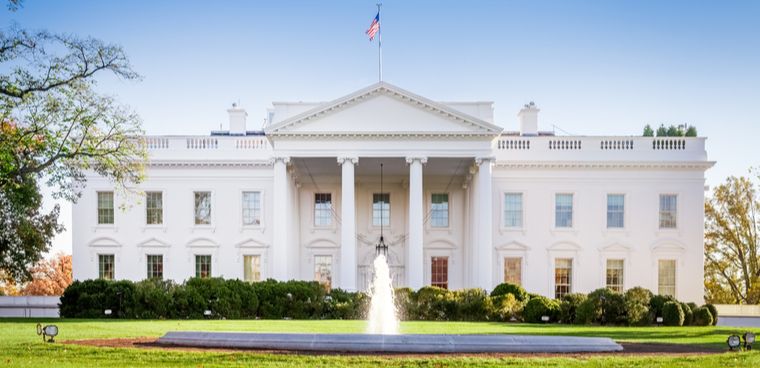New White House guidance for feds returning to the office and the future 'hybrid' federal workforce

A new OMB memo provides instructions on how to bring feds back to government offices on a large scale and asks agencies to consider long-term planning for a drastically different workplace.

The Biden administration released guidelines on Thursday for the large-scale return to in-person work across the government, rolling back the current occupancy limits, but keeping the government's maximum teleworking status in place.
"Significant progress is being made in our fight against the COVID-19 pandemic," the memo states. "Given that progress, the Administration is taking prudent steps to plan for an effective, orderly, and safe return of Federal employees and contractors to the physical workplace."
The June 10 memo, sent to agencies from the acting directors of the Office of Management and Budget and the Office of Personnel Management and the acting administrator of the General Services Administration, rescinds Trump-era re-opening policies outlined in April 2020.
Currently, agencies are charged with having re-opening plans of how and when they will increase the number of on-site employees, as well as policies for after re-opening, by July 19. The task force will review these plans before agencies are instructed to release them publicly.
Under the new policy, agencies should update the workforce safety with current health and safety guidance, including Centers for Disease Control's guidance telling vaccinated individuals they don't need to mask in most settings. The administration's Safer Federal Workforce Task Force recently instructed agencies that they shouldn't require vaccinations to return to work or ask about vaccine status.
Differences in vaccination status and disclosure may shape federal workplaces as employees return in increasing numbers. Although the new guidance does rolls back occupancy limits set by earlier policy, it instructing agencies to determine occupancy limits for individual worksites so that there can be physical distance between vaccinated and unvaccinated employees.
In addition to finishing their re-opening plans and updating their safety plans, agencies should also address any collective bargaining obligations they may have and give employees "ample notice" about coming back, before they bring employees back. In many cases, this will be at least 30 days, according to the memo.
Agencies can get exceptions from the safety principals outlined in prior OMB guidance, the memo states. The task force will review any requests.
Guidance for post-pandemic workforce planning
The latest guidance also gives agencies instructions in terms of planning for the long-term, post-pandemic workforce. It most likely won't look like it used to, the memo states.
Agencies' long-term plans "should be informed by lessons learned during the past 15 months," the guidance states, continuing to say that agencies' "eventual post-pandemic operating state may differ in significant ways from the agency's pre-pandemic operating state."
Leaders at OPM, OMB and GSA expect that many agencies will pursue hybrid work setup with some employees who telework occasionally, other remote workers who never come into the office and some feds with flexible work schedules, it says.
Decisions for how different jobs should be situated among these options should be highly dependent on the job itself, the memo states. Guidelines for teleworking will most likely be delegated to the lowest ranks within an agency possible "to provide maximum flexibility for defining work requirements to meet mission and workforce needs," it says.
Federal workforce officials are expecting more feds to have a mix of telework and on-site work, and more to be eligible for an alternative work schedule. Other segments might expand the number of employees working remotely, or never being expected to report to the office, it states.
Even for feds who need to work primarily on-site to deliver services or because of security requirements for national security jobs, for example, could be eligible for flexible work schedules or occasional teleworking, the guidance states.
Long term, the government will need funding to support a transition to a more hybrid setup. Agencies might need technology for meeting capabilities that allow some people to be in the office and others remote, and there will also be "opportunities" for "sharing of spaces among federal agencies" in the long term real-estate, the memo states.
These sorts of workforce flexibilities could be valuable in recruitment and retention long-term, the memo says.
"As shown during the pandemic, agencies can, where appropriate, deploy personnel policies such as telework, remote work, and flexible work schedules effectively and efficiently as strategic management tools," the memo states. "The transition to the post-reentry work environment offers a unique opportunity to update federal agency strategies and policies related to the federal workforce to be more future-focused."
NEXT STORY: OMB wants budget boost to rebuild workforce



